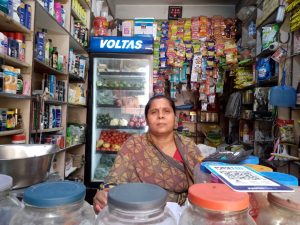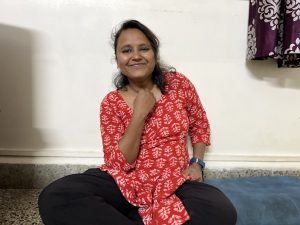As I leave home on an errand on a hot Thursday morning, I spot a woman riding an e-rickshaw on the road. Intrigued, I hop on to her ‘tom-tom’ as it is called in Assam. She tells me her name is Minoti Das, and she is quite used to startled looks from passers-by.
“I get that a lot,” says Minoti, who appears to be in her 40s, and has been driving e-rickshaws around Tinsukia for four years now.
Abandoned by her husband, she has been supporting herself and her two school-going daughters by ferrying the town’s commuters and goods across locations. Her daily income, she says, ranges between Rs 600 and Rs 1000, and her monthly income never exceeds Rs 10,000.
After paying for food, electricity, fuel, and her e-rickshaw battery, she barely has any savings. Her husband used to work as a contractor and brought in around Rs 1-2 lakh a month but his addiction to gambling and alcohol, and this blew a big hole in his earnings.
“We had a joint account and I would deposit whatever money he would give me,” she recalls. So when she suspected that her husband was on the verge of leaving her, she withdrew her share from the bank and bought an e-rickshaw for Rs 1.35 lakh. She hid it in her sister’s home and rented it out to youngsters in the neighbourhood for the first few months of 2020.
“If he got to know this, he wouldn’t let me live,” says Minoti of her husband. Once he left her, she brought the vehicle home and started driving it. But it has not been easy because her savings are low. “I spend around Rs 3000 every month on the e-rick’s maintenance. Gari bilak eku guarantee nai (these vehicles have no guarantee) – sometimes the accelerator fails, sometimes the brake drum, or the wheel bearing fails,” she says Minoti.
The vehicle needs six hours of power supply to be fully charged and Minoti says she knows of no charging points in the town. So she charges it at home. This is both expensive and inconvenient because Assam has frequent power cuts. “I do a recharge of Rs 1000. It doesn’t even last a month (Assam has a prepaid electricity bill system),” she says.
Electronic Vehicle (EV) batteries need to be changed twice in 10 years, however, in the last four years, Minoti has had to change the battery of her vehicle twice. “The batteries mostly stop working after a year and if you are lucky it lasts for 2 years,” says Minoti. The Electric Vehicle Policy of Assam, 2021 states that EV owners can return vehicle batteries that have reached the end of their lives to any charging point or swapping station and receive a payment in return. Since there are no charging points or swapping stations in the town, she cannot avail this facility.
Assam’s inflation rate of 6.08% is higher than the all-India rate of 5.09%, per government data from February 2024. Manipur (10.9%), Odisha (7.5%) and Telangana (6.7%) are the top three states with highest inflation rates.
With rising inflation, household debt is at an all-time high – 40% of the Gross Domestic Product (December 2023). And there has been a 47-year low in the net financial savings – at 5.1% of GDP. These together define the financial distress that households in India are grappling with.
At Behanbox, we wanted to map the costs and burdens of this distress in real time. This is our sixth edition of ‘Inflation Journals’, a series that shows through real life stories from across India how households are coping with rising costs and debt.





